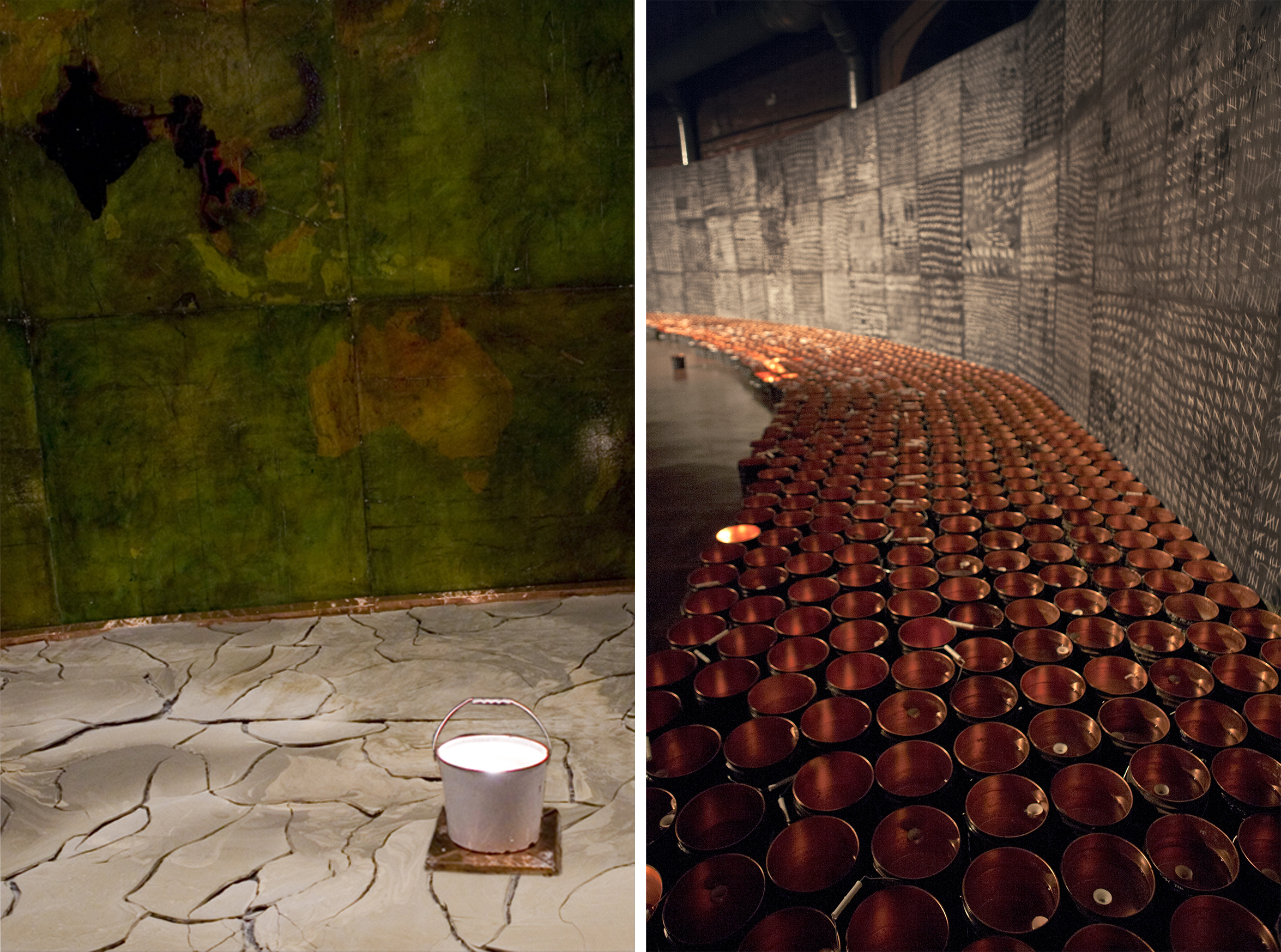






The proposal for Parallel Lines Eventually Converge authored by collaborators Leah Johnstone-Mosher and Lauren Austin was select to be part of the 16th annual Medicine Wheel Vigil held in honor of World AIDS Day at Boston Center for the Arts Cyclorama.

The piece aimed to create visitor participation in illustrating the interconnectedness of all lives through the metaphor of overlapping chalk lines, drawing attention to the indirect way that an individual may be affected by the HIV/AIDS epidemic.

As part of a much larger installation that filled the Cyclorama's 23,000 square feet of open space, Parallel Lines Eventually Converge offered an intimacy of scale that was lacking in the larger spaces. Because of this, the space invited interaction and connection between visitors, serving to strengthen the message of the work.

Since 1992, the Medicine Wheel Vigil has cycled through the four elements as a main component of its theme. In honor of the element water, Parallel Lines Eventually Converge featured a large domed roof constructed from suspended bags of water. This oculus acted as the primary means of illumination.

It was important to the artists that Parallel Lines Eventually Converge remain true to the aesthetic and ideological essence of the larger work, and to the vision of Artistic Director and creator, Michael Dowling. To this end, the materials chosen were directly inspired by those used in the greater space.